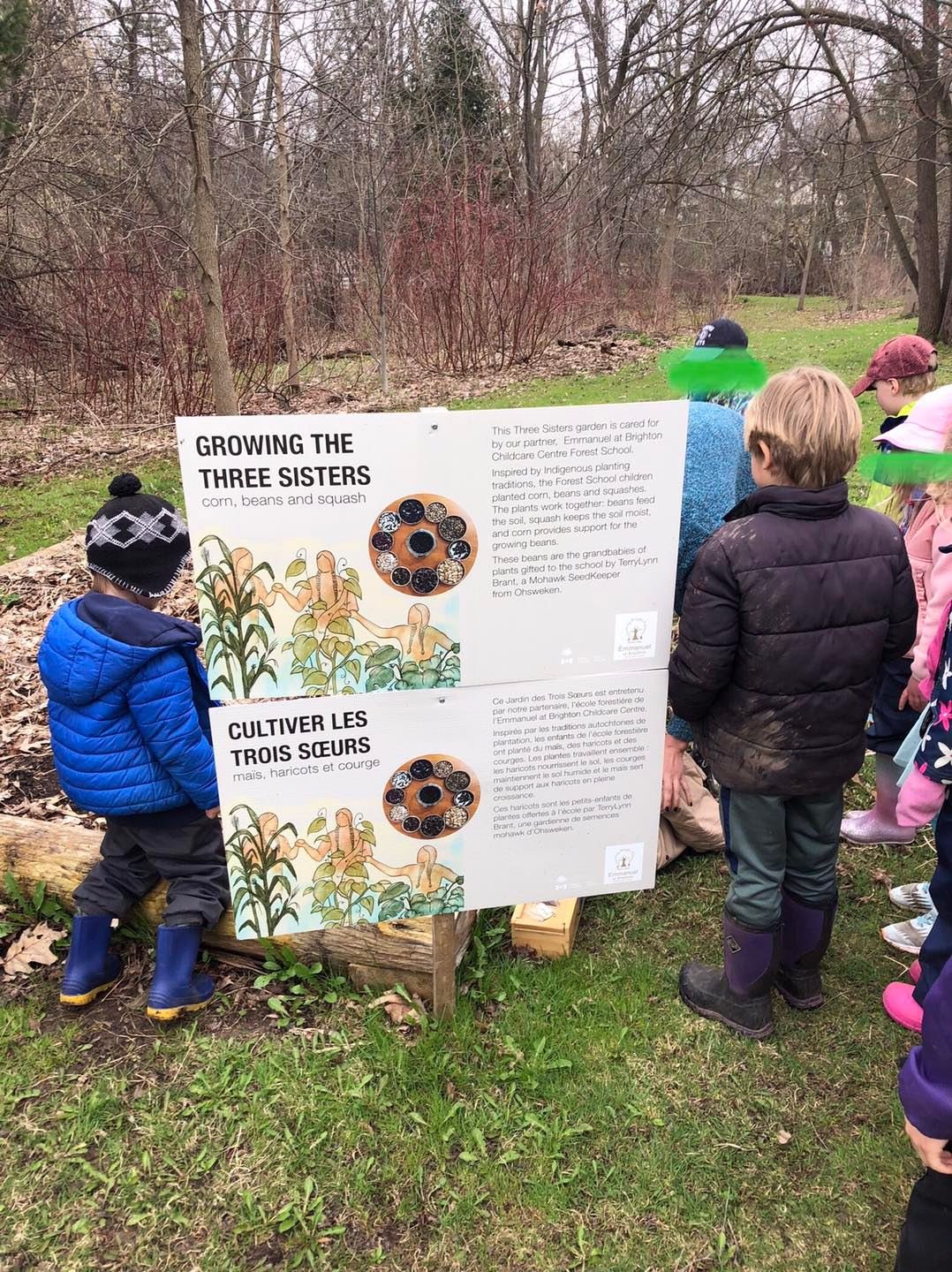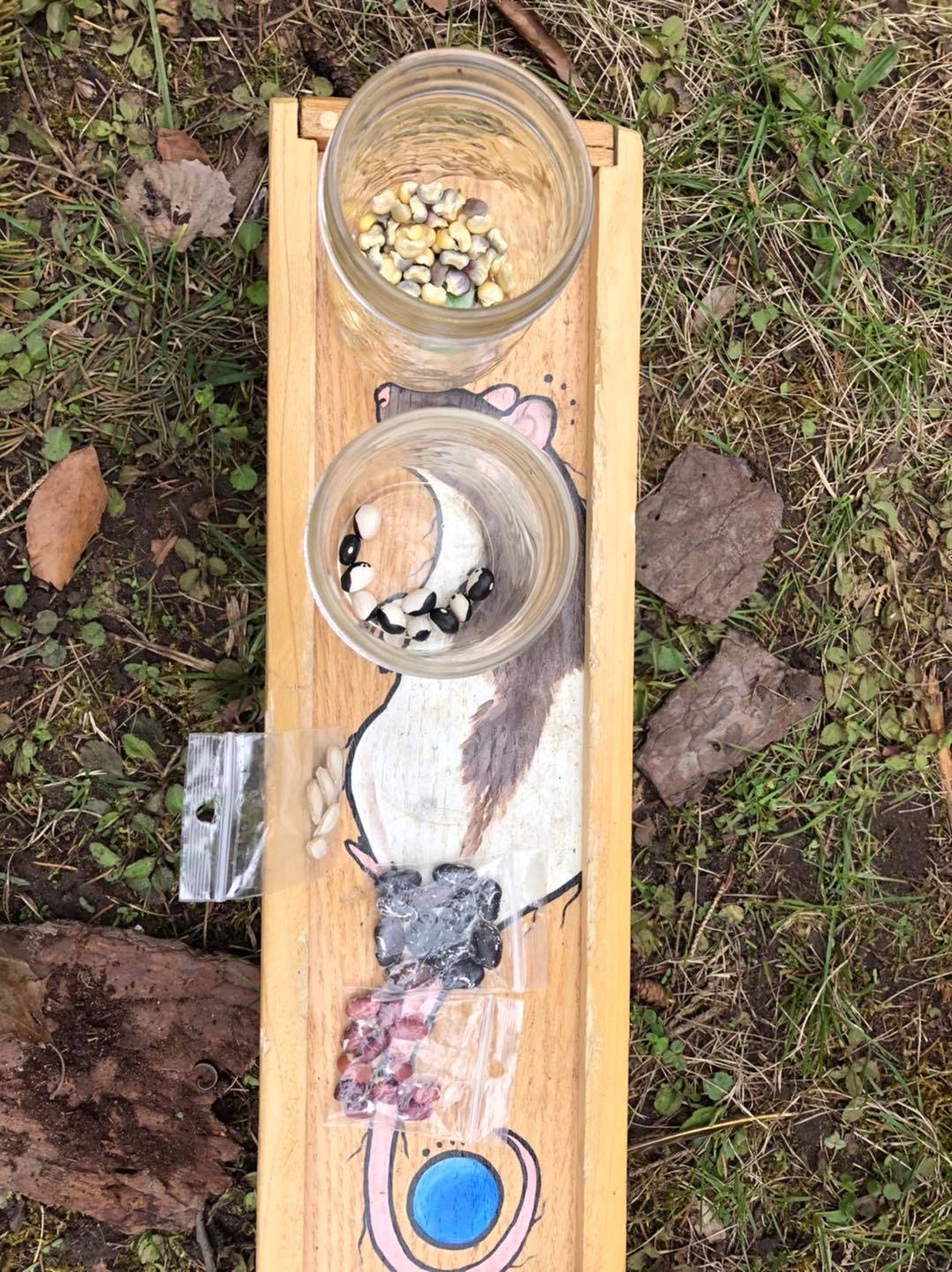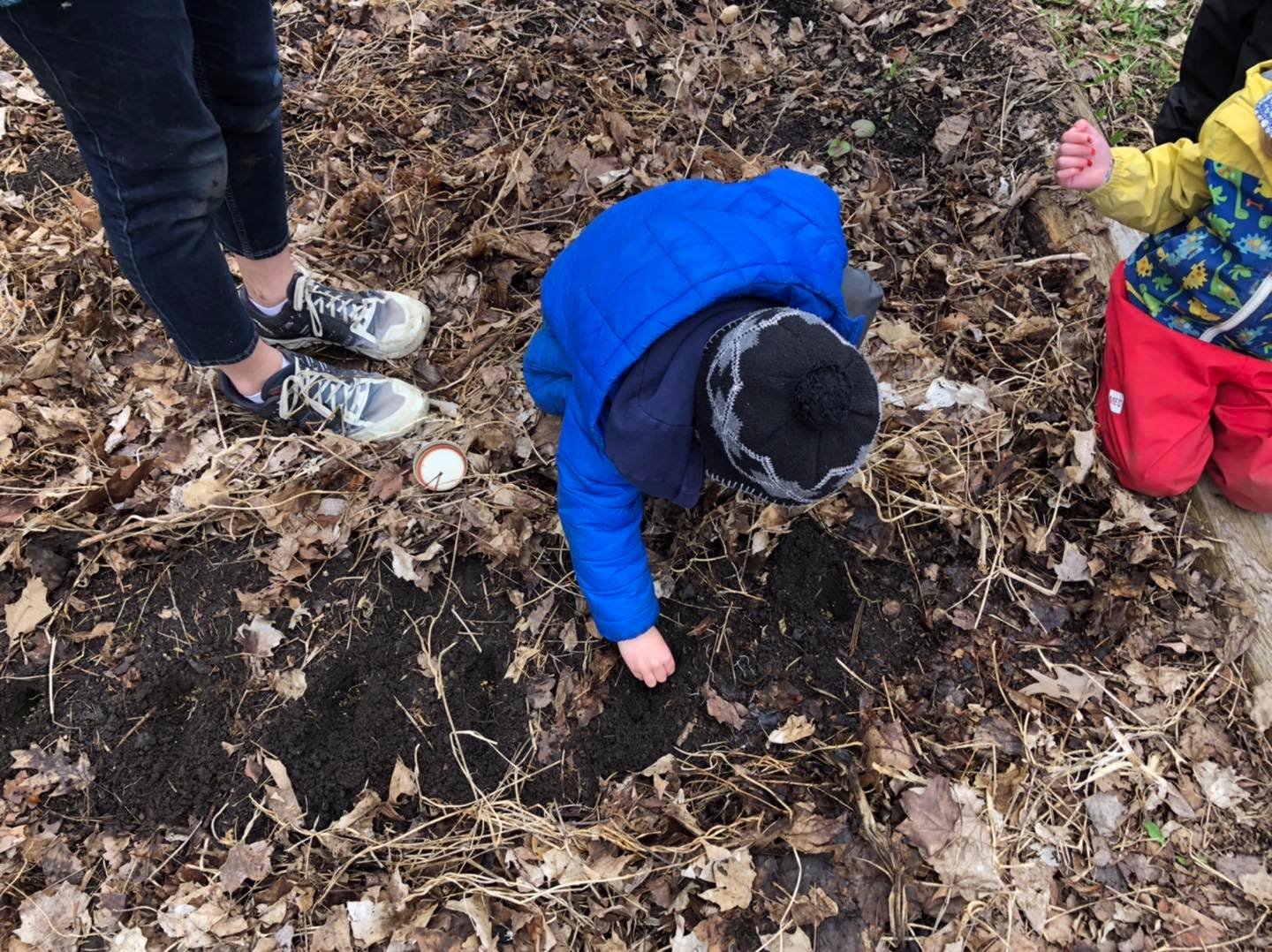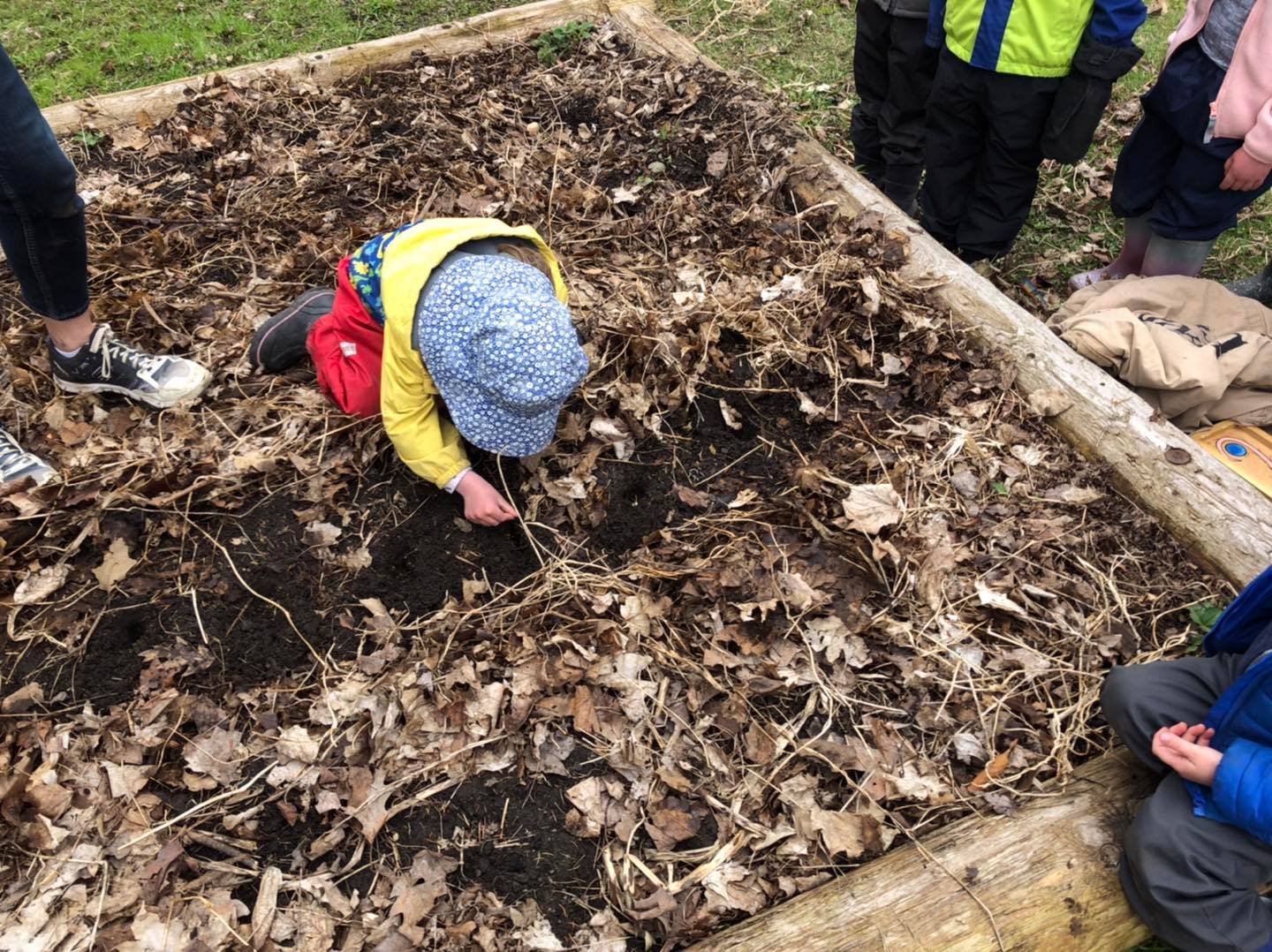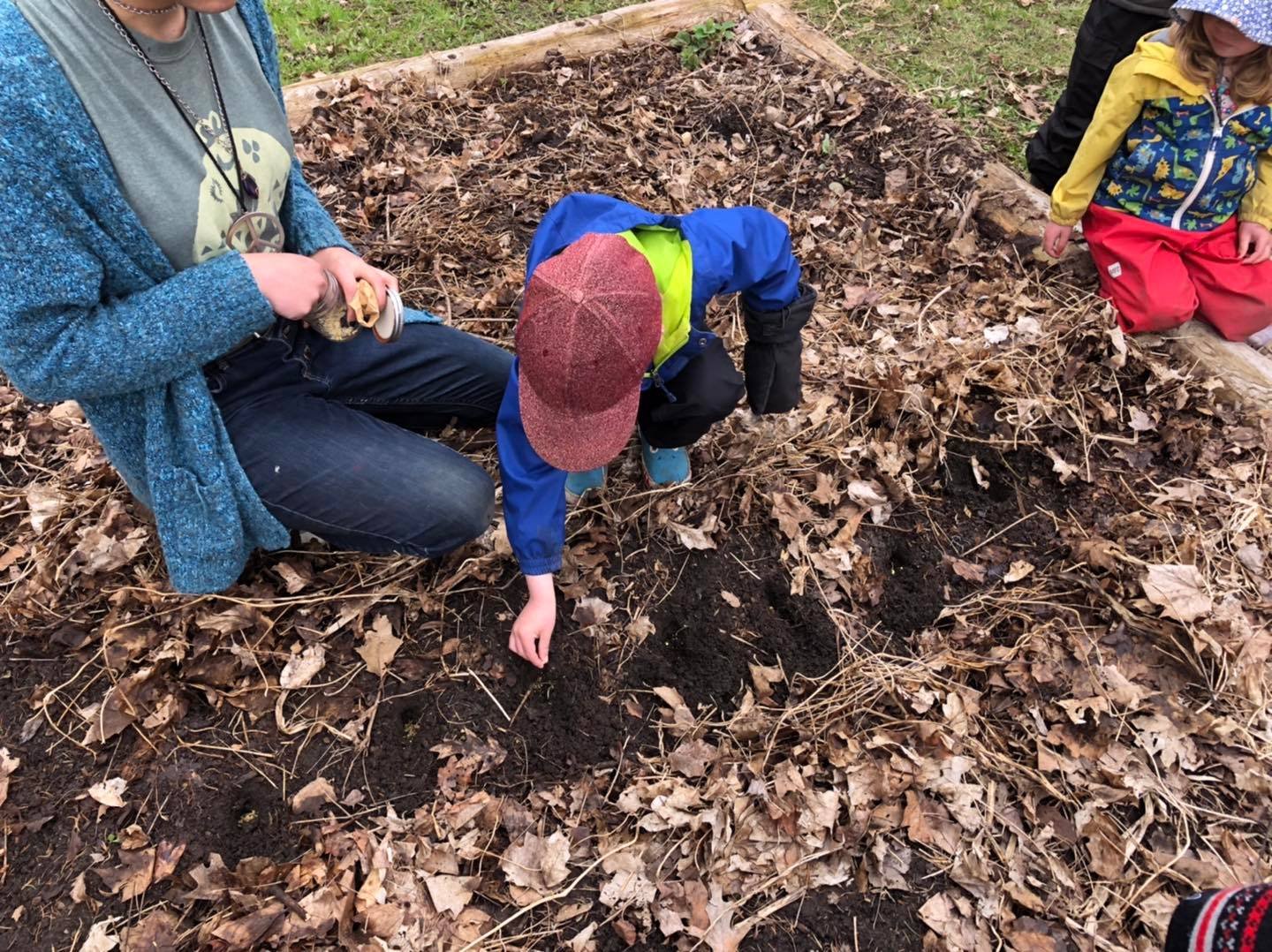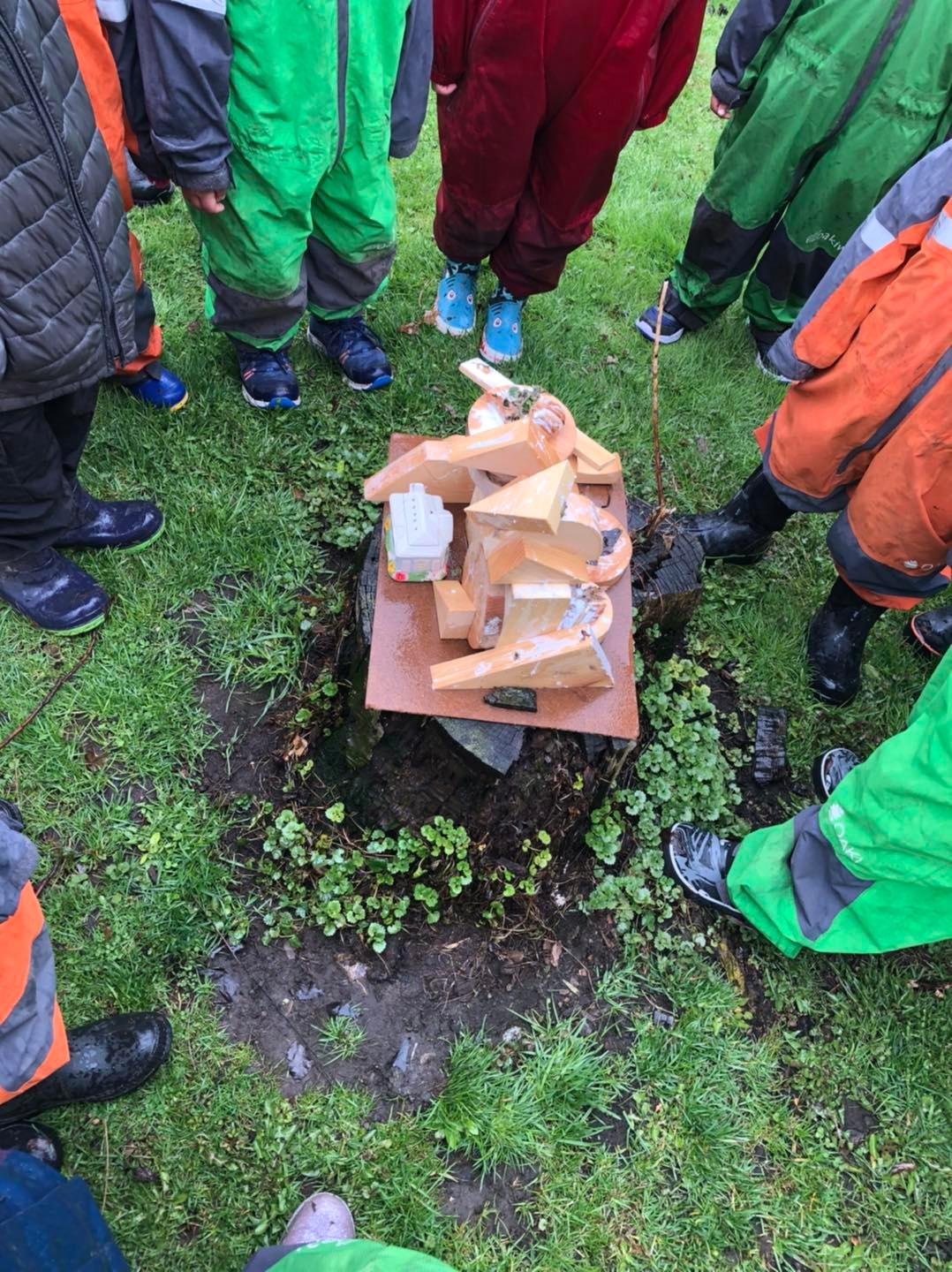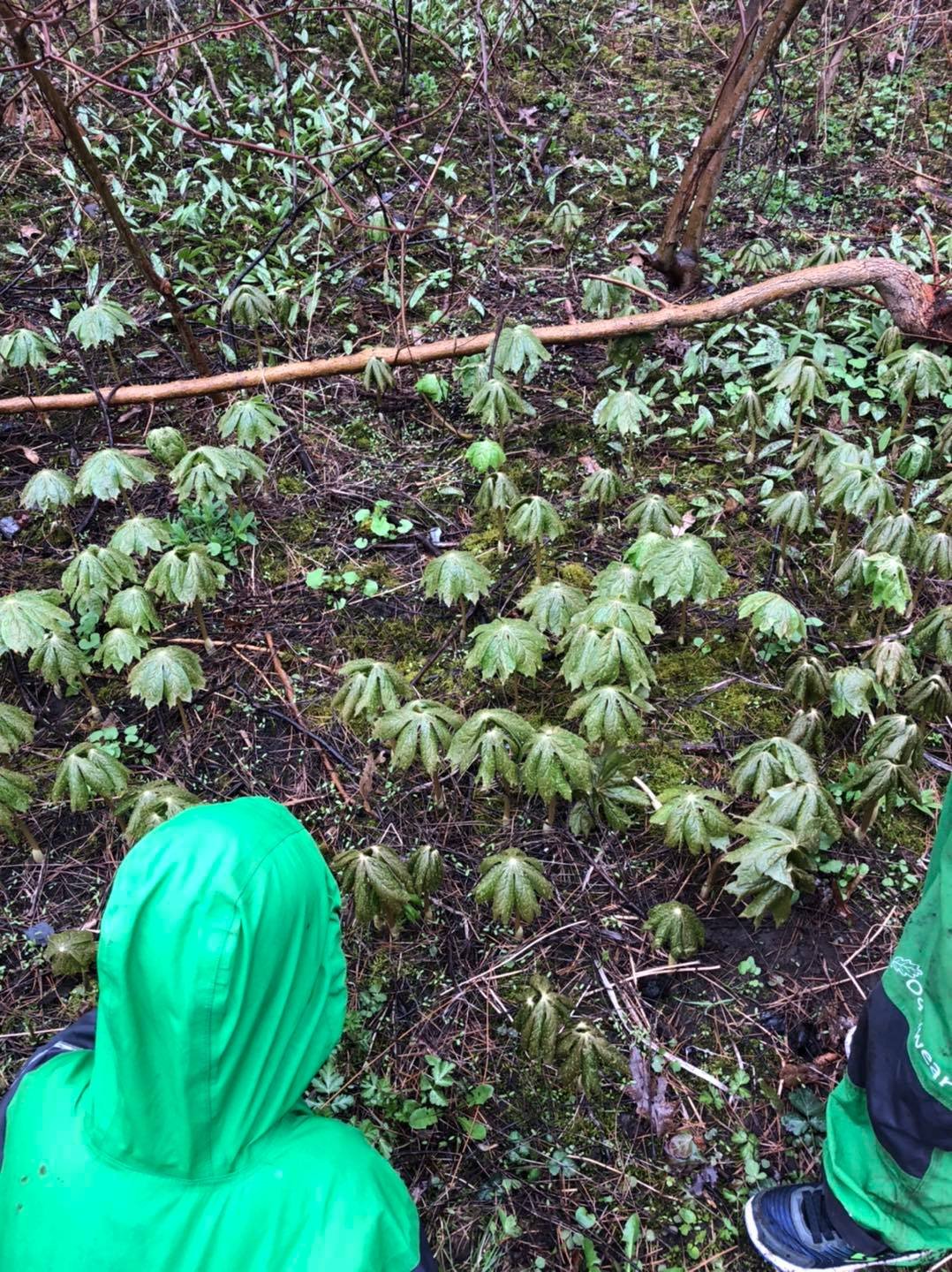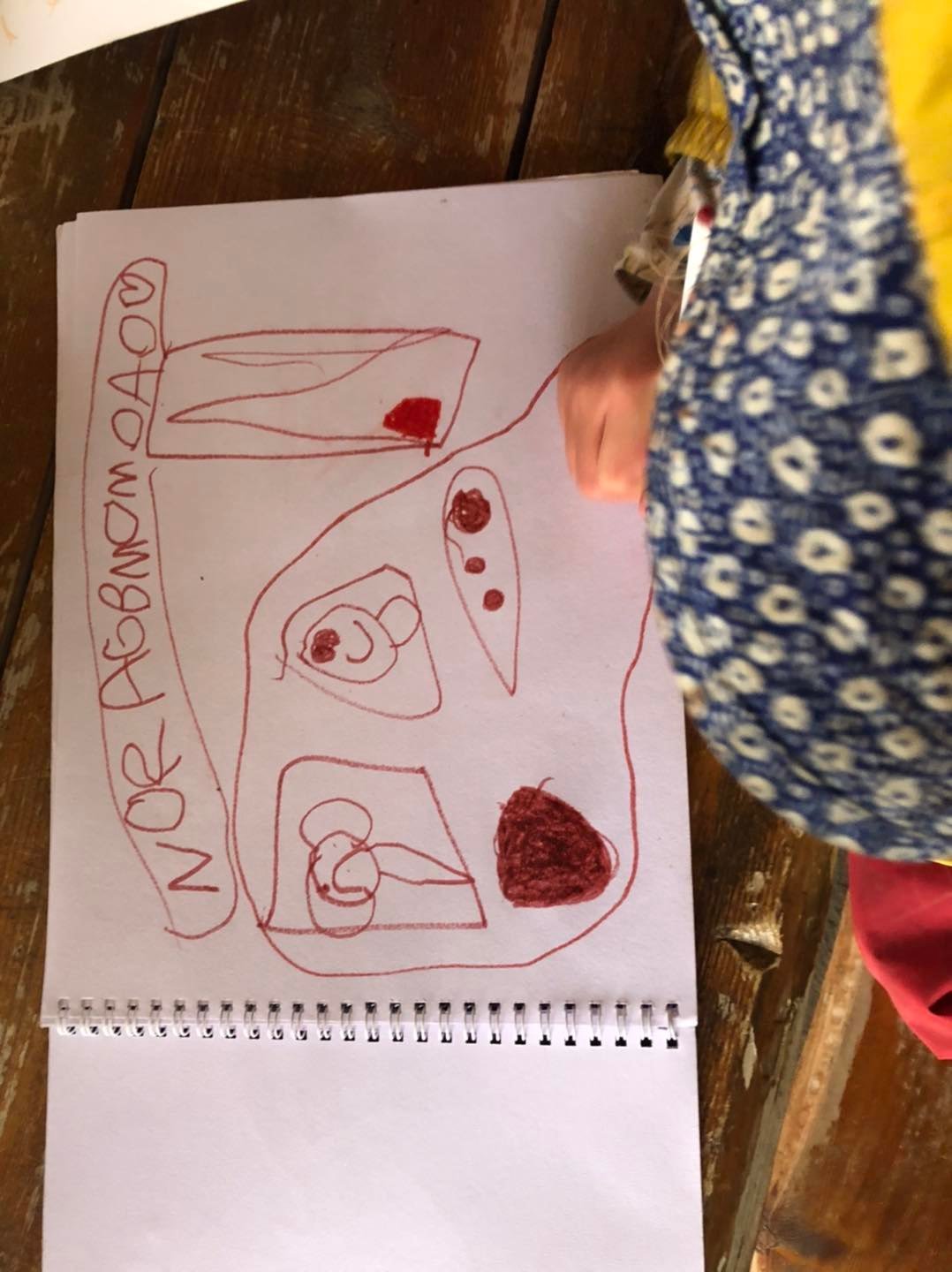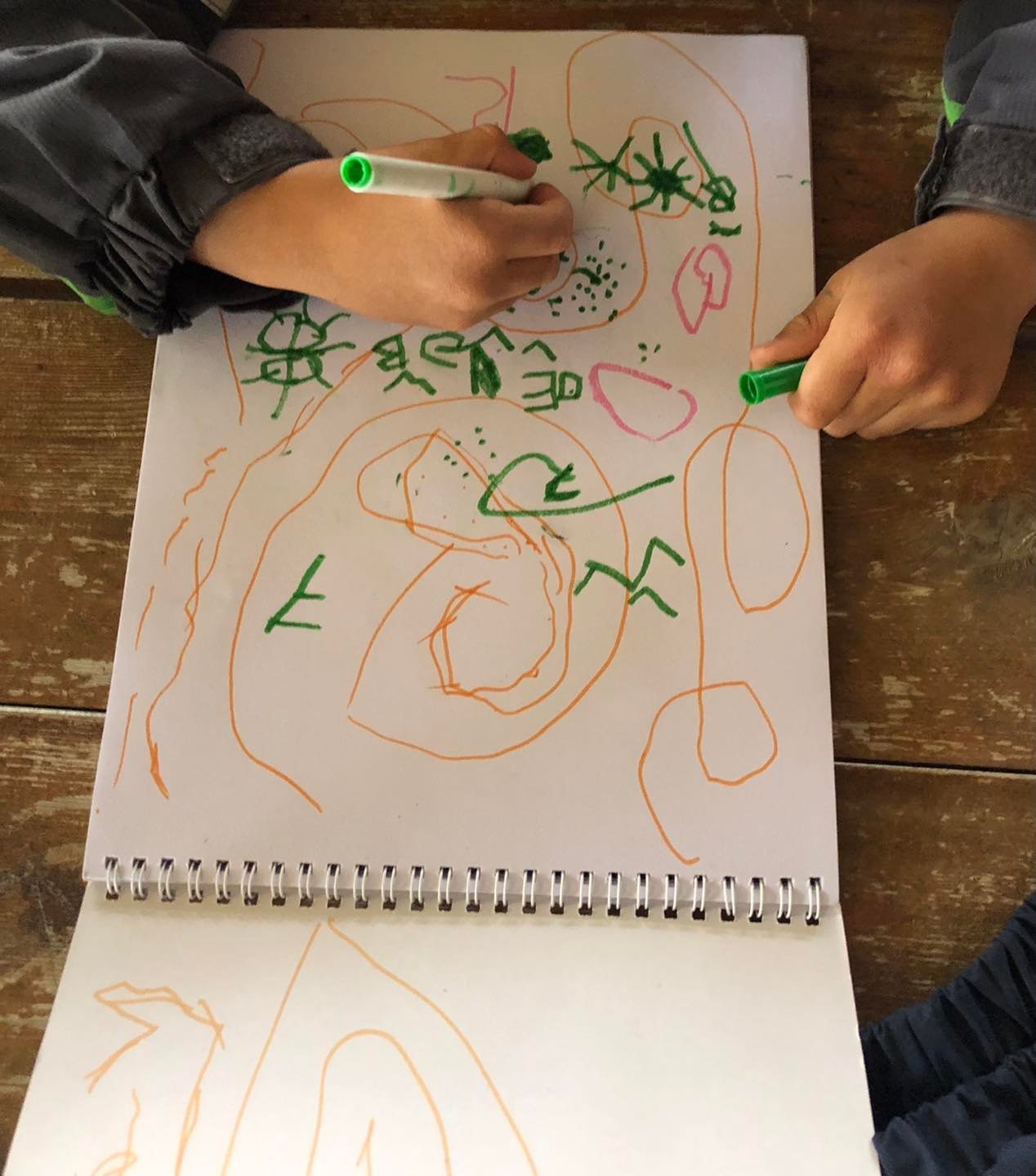Planting our Three Sisters Garden at Woodside National Historic Site
The gardens at Woodside National Historic Site have been the focus of the children’s inquiries and interests. We have been reviewing our knowledge and experiences regarding the Three Sisters Garden we planted, nurtured and tasted last year. To add to the authenticity of our Spring Planting, Éva visited the Mohawk Seedkeepers Gardens’ Seed Exchange, lead by Terrylynn Brant. She carried seeds from our garden to the seed exchange event in Ohsweken Ontario and invited the Three Sisters Seeds from the exchange to come and grow with us.
Dewe’igan lead the children through the planting and offered Asemaa or Oién:kwa’ (Mohawk), tobacco, to each seed, to honour the seeds through reciprocity. We talked about the lifecycle of the plants, the reciprocal relationship among the Three Sisters: Corn, Bean and Squash. The children described ways the Three Sisters support each other and Mother Earth. We reflected on ways we support each other and the Earth as discussions emerged.
We continue our fantasy play explorations, by adding loose materials to our environments. The children continued building Small Worlds and continued writing and drawing stories about Fairies in their journals. We visited the fairy logs we graced with our Fairy Homes last week, and we added the little house we found broken and repaired as a community. “Now the Magic will return to the Fairy House!”- the children concluded smiling.
We explored the Forest on this rainy day saying our thanks to the May Apples, Trout Lillies, Bloodroots, Wild Onions, Trilliums and other amazing Plants, fungi, and animals. The children incorporated the plants into their fantasy play, imagining how the Fairies used the “tiny umbrella plants” (May Apples) to protect them as they flew from flower to flower.
The Forest and Nature School approach to learning encourages us to reflect on ourselves as important members of the natural world. We reflected on the important roles and responsibilities we bring to these complex symbiotic relationships. When we interacted with the gardens and the Forest we reflected on how much we as human beings depended on the plants, fungi, animals, and microbial life forms. Building relationships with Nature deepened our understanding of complexities, synergies, and symbiotic relationships thus building our understanding of diversity.
Éva M.

